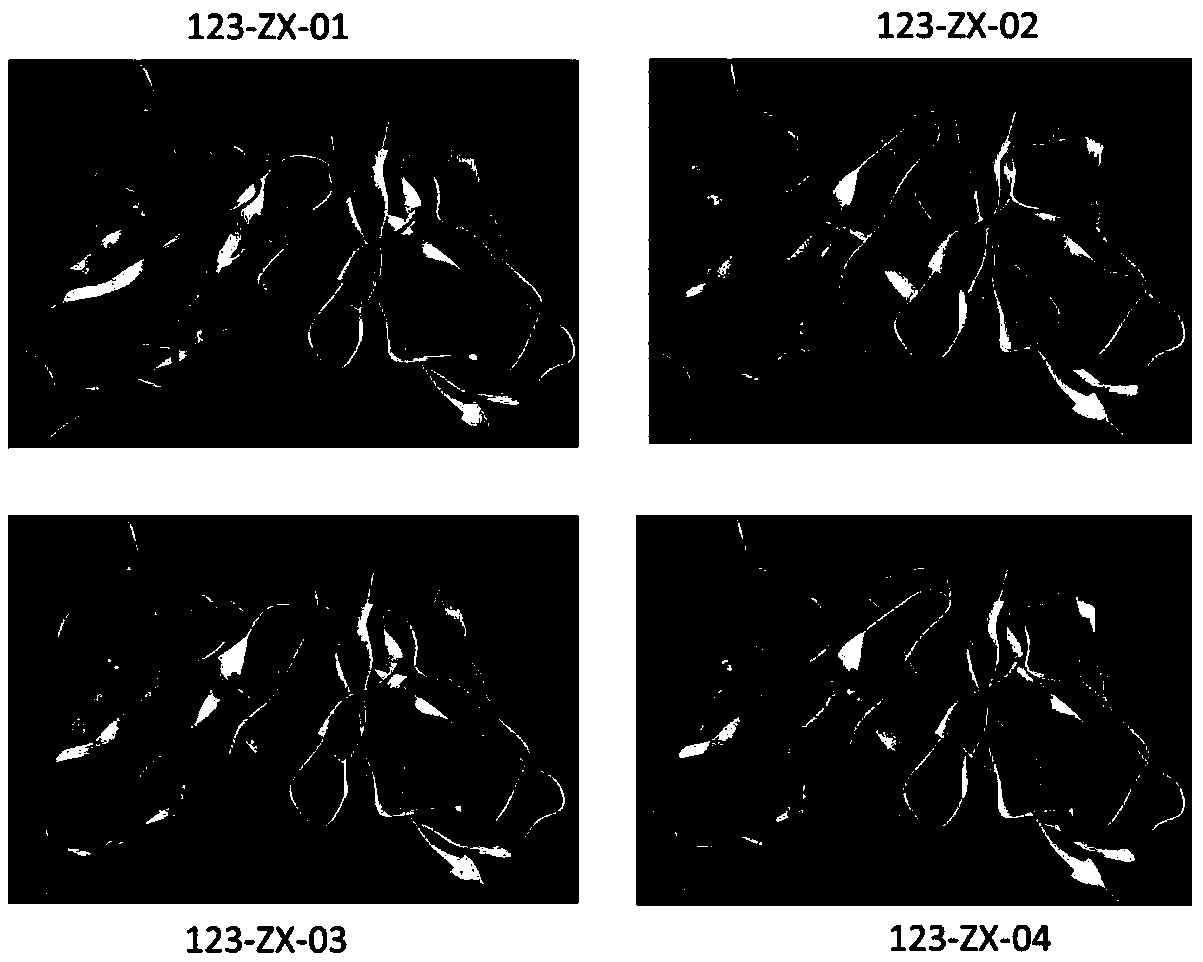Anti-CD123 humanized single-chain antibody and application thereof
A single-chain antibody and antigen technology, applied in the field of genetic engineering, can solve the problem of antibodies losing antigen-binding activity and achieve the effects of enhancing persistence, safety, good stability, and reducing immunogenicity
- Summary
- Abstract
- Description
- Claims
- Application Information
AI Technical Summary
Problems solved by technology
Method used
Image
Examples
Embodiment 1
[0046] Example 1: Design of humanized monoclonal antibodies against human CD123 antigen
[0047] (1) The amino acid sequences of the 6 FR regions of the light and heavy chains of the mouse anti-human CD123 monoclonal antibody were analyzed and compared through the IMGT / BLAST database, and the human antibody sequence with the highest homology was selected as the transformation template. Three humanized scFv were obtained, named 12-1h1, 12-1h2 and 12-1h3, and the amino acid sequences are shown in the following table:
[0048] Table 1: Obtained humanized scFv sequences
[0049]
[0050] It has been verified that although the CAR constructed by humanized scFv can be normally expressed on the surface of T cells, none of them can work normally, while the CAR of the mouse-derived unmodified scFv combination can work normally, recognize and kill tumor cells expressing CD123; therefore, human The derivation-modified scFv has functional defects, the results are as follows figure 1 ...
Embodiment 2
[0052] Example 2. Expression and purification of humanized monoclonal antibody targeting CD123
[0053] The plasmid carrying the monoclonal antibody was used to construct a lentiviral expression system, and the CHO expression cells were infected by virus infection, and the monoclonal cell lines with high scFv expression were screened, and the cell expression supernatant was collected every three days. The expressed scFv carries a His tag, and the His tag protein is used for purification. The collected cell supernatant was purified using the AKTA Prime instrument. The purification was divided into two steps: NTA-Ni+ affinity chromatography and gel chromatography. For specific experimental steps, refer to the AKTA Prime manual. The purified protein was verified by Western blot to verify the activity and purity of scFv, such as Figure 4 As shown, the four modified scFvs all have activity and high purity.
[0054] Example 2, Affinity Determination of Humanized Monoclonal Antibo...
Embodiment 3
[0056] Example 3. Preparation of Lentivirus Expressing a Chimeric Antigen Receptor Targeting Human CD123 Antigen
[0057] (1) Prepare the gene sequence of the chimeric antigen receptor targeting human CD123 antigen
[0058] Synthesize chimeric antigen receptor sequence containing leader peptide (also known as signal peptide), anti-human CD123 antigen single-chain antibody ScFv, hFc hinge region, transmembrane region and intracellular signal segment in sequence, its structure is as follows Figure 6 shown. The nucleotide sequence of the leader peptide is atgggatggagctgtatcatcctcttcctggtagcaacagctacaggcgtgcacagt; the nucleotide sequence of the humanized single-chain antibody against human CD123 antigen is shown in SEQ ID NO:13, SEQ ID NO:14, SEQ ID NO:15, and SEQ ID NO:16 shown; the nucleotide sequence of the hFc hinge region is an amino acid sequence such as the amino acid sequence corresponding to SEQ ID NO.17 or SEQ ID NO:18 or SEQ ID NO:19 or SEQ ID NO:20; the transmembrane...
PUM
 Login to View More
Login to View More Abstract
Description
Claims
Application Information
 Login to View More
Login to View More - R&D
- Intellectual Property
- Life Sciences
- Materials
- Tech Scout
- Unparalleled Data Quality
- Higher Quality Content
- 60% Fewer Hallucinations
Browse by: Latest US Patents, China's latest patents, Technical Efficacy Thesaurus, Application Domain, Technology Topic, Popular Technical Reports.
© 2025 PatSnap. All rights reserved.Legal|Privacy policy|Modern Slavery Act Transparency Statement|Sitemap|About US| Contact US: help@patsnap.com



